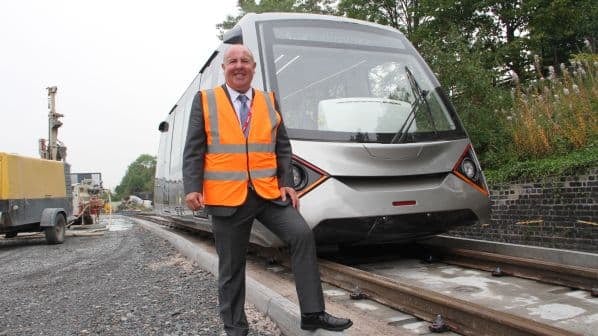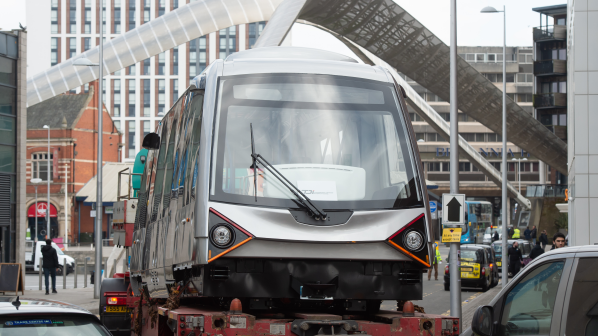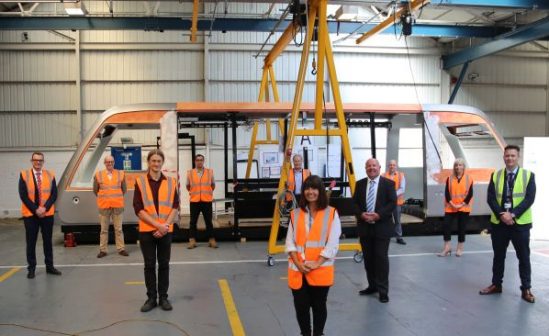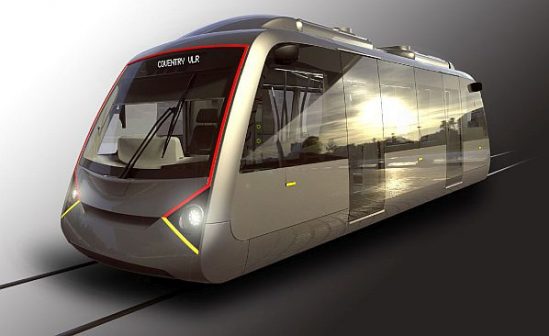THE battery-powered Coventry Very Light Rail (CVLR) vehicle being developed in the West Midlands region of Britain has been successfully tested on a new design of slab track that avoids the need for expensive and time-consuming utility diversion.
The new slab track has been designed by engineering consultancy Rendel, working in conjunction with the WMG international manufacturing research centre at the University of Warwick.
Thinner than conventional light rail track, the new design can be laid only 300mm deep into the road surface, reducing the need to divert all underground utility pipes and cables, which can add significant cost and delay to light rail projects.
The new track design was installed at the Very Light Rail National Innovation Centre (VLRNC) in Dudley in a few weeks by civil works contractor Galliford Try, “proving the simplicity of the design which in turn will lead to much lower construction costs and reduced construction time,” according to the CVLR project.
The VLRNC test track includes a tight curve and a 250m vertical hump, as both are significant challenges for traditional slab track designs that add to the cost and lengthy delivery time of light rail projects.
Combined with the battery-powered CVLR vehicle, it is hoped that the new track system will enable cities to install rapid transit systems much more quickly and at a significantly lower cost.
The new slab track has been fitted with instrumentation to measure the vibration, noise and forces produced by the CVLR vehicle when in operation. The novel features of the CVLR are expected to reduce operational noise and vibration when compared with existing LRVs.
Ongoing development work at the VLRNC will culminate in a real-world demonstration on the streets of Coventry city centre.
Partners in the CVLR project include Coventry City Council, Transport for West Midlands (TfWM), WMG and the Black Country Innovative Manufacturing Organisation, operator of the VLRNIC in Dudley.
The project is funded with £40m allocated from the £1.05bn City Region Sustainable Transport Settlement (CRSTS) awarded to the West Midlands Combined Authority (WMCA) by the Department for Transport (DfT).
“This track is crucial to our vision and this successful test is a big milestone for the project,” says Mr Jim O’Boyle, cabinet member for jobs, regeneration and climate change at Coventry City Council.
“The track is unique, it’s specifically designed to be installed more quickly and more easily than the track used by other light rail systems.
“This test will also show that our vehicle is able to run on tight corners and up and down hills,” he says, “it’s this that will enable it to run in smaller and medium-sized cities.”
“I look forward to seeing this technology progress from the workshop to real-world application in the months and years ahead,” says WMCA chair and mayor of Birmingham, Mr Andy Street.
“As VLR picks up pace, we’ll be able to further reduce traffic congestion and improve our air quality, offering a convenient and sustainable transport option.”
“Having experience of light rail construction previously, the opportunity to play a part in creating an innovative system like this provided us with the chance to see how these complex infrastructure systems could be installed with significant risk and cost savings,” says Mr Jamie Missenden, regional manager at Galliford Try.
“In our view, this system offers significant benefits and added value to that of the more traditional light rail installation and construction process.”




